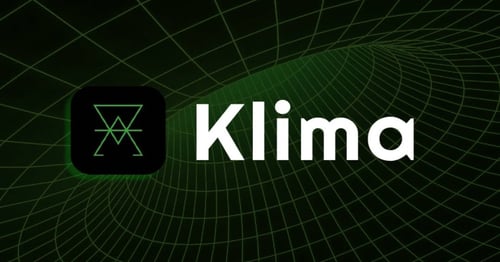In their own words, Olympus is a decentralized reserve currency protocol based on the OHM token. Each OHM token is backed by a basket of assets in the Olympus treasury. The goal of the project is to build a policy-controlled currency system, in which the behaviour of the OHM token is controlled at a high level by the OlympusDAO. The pseudonymous founder(s) believe this system can be used to optimise for stability and consistency so that OHM can function as a global unit-of-account and medium-of-exchange currency.
The protocol was launched in May 2021, and has since amassed a sizable treasury balance, as well as total value locked (TVL) in their staking pool.


© Dune Analytics
While it started with only holding DAI in its treasury, it quickly evolved to include more coins such as FRAX, LUSD and ETH, as well as LP tokens such as OHM/DAI LP tokens from Sushiswap.
What is a reserve currency?
According to Investopedia, a reserve currency is a large quantity of currency maintained by central banks and other major financial institutions to prepare for investments, transactions, and international debt obligations, or to influence their domestic exchange rate. A large percentage of commodities, such as gold and oil, are priced in the reserve currency, causing other countries to hold this currency to pay for these goods.
Currently, the US dollar is the undisputed reserve currency for the world, but the choice of global reserve currency has changed throughout history. Pre-World War 2 and Bretton Woods agreement, the reserve currency was the British Pound Sterling, and even further back in time we had the Greek drachma, Arab dinar, Venetian florin and more.
The position of the US dollar as the reserve currency was not cast in stone. Even during the Bretton Woods conference, an alternative global unit of account, known as the bancor was also proposed. In addition, the International Monetary Fund (IMF) today maintains the IMF Special Drawing Rights (SDRs) which is meant to be a supplementary foreign exchange reserve. The SDR currently comprises a basket of currencies including the USD, EUR, JPY and CNY. In the aftermath of the 2008 Global Financial Crisis, given weaknesses in the dollar, China had called for the SDR to be adopted as the global reserve currency, partially replacing the dollar. Olympus seeks to build OHM with a similar concept but for crypto.
How does Olympus and OHM work?
To ensure that each OHM is backed by a basket of assets and Olympus has the capability to maintain a floor price for OHM (currently 1 DAI), Olympus needs to amass a treasury. This is done through the initial sale and distribution of OHM, as well as subsequent issuance of “bondings”.
 © CoinGecko
© CoinGecko
“Bondings” are the key innovation underpinning Olympus and how it seeks to manage its currency, OHM. Very simply, Olympus buys treasury assets from investors at their risk free value, and pays them back with OHM at a discount after a certain vesting period (currently 5 days). The discount rate of the OHMs is also known as the premium of the bondings – the higher the premium, the more OHMs investors will receive for their assets after the vesting period. Premiums rise with the debt ratio; the more OHM the protocol wants to sell through bondings, the higher the discount, and vice versa.
The initial version of “bondings” launched with OHM-DAI LP, where investors were encouraged to exchange their LP tokens (essentially their liquidity in the Sushiswap pools) in return for discounted OHM. Soon after Olympus also introduced bondings for other LP tokens, as well as other treasury assets such as DAI, FRAX, etc.
It is important to note that while they have a similar name, the “bondings” introduced by Olympus are not the same as bonds commonly understood in the traditional finance world. Bonds are debt obligations which have fixed tenor and coupon (think of it as a loan), where issuers have to repay their investors their principal and coupon at the end of the tenor. Olympus’ “bonding” however, is more akin to a discounted token sale. Investors sell their assets for OHM at a discount, but OHM itself generates no returns unless staked, or through price appreciation.
Over time with more bondings sold, the Olympus protocol effectively owns most of the liquidity in the OHM Sushiswap pools. Olympus coined this lock-in as “Protocol-owned-Liquidity” (more on this later).

© Olympus
How does staking and bonding lead to Olympus' success?
By promising a high rate of return (APY) on their staking pool (and pushing their (3,3) game theory meme), Olympus encourages existing OHM holders to stake their OHM. This also encourages investors to either buy OHM from the market or perform more bondings with the protocol for more OHM. This keeps the price of OHM high, protecting the protocol from needing to redeem liquidity from the pool.


© Olympus
All these features working in tandem arguably leads to a virtuous cycle:

© CoinGecko
Will Olympus succeed? Here are 5 things to look out for
We’ve described the mechanics for Olympus and the cycle which has been driving its early success, it would also be pertinent to point out certain scenarios and metrics to watch out for.
1. Rate of return of staking OHM
The high rate of return of staking OHM is what incentivises inventors to buy more OHM from the open market, as well as provide liquidity and perform more bondings for more OHM. It would be interesting to see how investors would react when the returns inevitably taper off. Intrinsic to this is the question of “how much return is enough” to prevent investors from dumping OHM to levels below its floor price, thereby forcing the protocol to buy back OHM.
From the protocol’s perspective, the DAO may also eventually consider shifting its (admittedly simplistic) investment strategies to generate a certain rate of return from its treasury assets to keep investors interested. In addition to yield farming and earning trading fees from the Sushiswap pools, Olympus has also introduced other ways to generate yield in order to maintain the rate of return. This includes lending, as well as the Olympus Pro offering.
2. Types of Treasury Assets
There are philosophical but also practical questions when it comes to picking the types of assets to be included as part of the Olympus treasury. From a reserve currency perspective, as we have seen with the IMF SDR mentioned above, it should logically mean that the treasury only takes in assets which form the basis of most crypto transactions. In this case we have seen the protocol start with stablecoins DAI, FRAX and LUSD, as well as ETH.
However, such assets may not generate great returns to satisfy investors, and the protocol could consider taking in other assets which might be more high yielding. This may create a convoluted treasury that could be hard to value accurately, creating challenges with using OHM as a unit-of-account.
3. Total Value of Treasury
Again closely related to returns, it is easier to generate sizable returns when you have a small amount of capital, and much harder when that capital balloons to an enormous size. Would investors be able to accept reduced returns when the size of the treasury becomes large? Alternatively, Olympus could cap the size of the treasury (thereby placing a cap on the amount of OHM which can be issued), choosing to maintain a certain level of returns for existing investors.
4. Discount Rate of Bondings
As mentioned earlier, discount rate correlates to the amount of OHMs the protocol wants to sell. Hence, a reduction in the discount rate would mean a contraction in the supply of OHM to the market, and vice versa. The contraction scenario is akin to central banks reducing monetary supply in the traditional finance world, which has strong ripple effects throughout the entire industry and overall economy.
While this is a common monetary policy lever in the traditional world, it remains relatively untested in DeFi and the crypto industry as a whole. Thus far most projects have focused on only setting the rate of return in liquidity pools. How OHM investors and the broader crypto industry react to changes in monetary policy would be interesting to observe.
5. The Price of OHM
Finally, we must not forget that the main objective of Olympus is for OHM to become the reserve currency for the crypto industry. At the start of most projects, the price of the coins always exhibit significant volatility, and OHM is no exception. While OHM was designed to be a free-float currency, its price will need to be relatively stable if it intends to fulfil its role as a reserve currency, particularly as a medium-of-exchange and unit-of-account. Whether this happens eventually is closely linked to the other four metrices we mentioned earlier.
Wrapping up on Olympus
Olympus is arguably one of the hottest DeFi projects and coins over the summer of 2021, and it brings a novel innovation in its “bonding” mechanism to swiftly amass a sizable treasury and lock-in liquidity for its OHM pools. The protocol’s early success has also inspired many fork projects, such as Klima DAO, Wonderland, Snowbank and Gyro.
Fundamental to Olympus’ long term success however, is whether it can convince the cryptoverse that it needs a reserve currency. If a dominant chain emerges where most crypto transactions take place, arguably then there is no reason for OHM to exist - the chain’s native token would by default become the reserve currency.
In a multi-chain reality however, a basket-of-crypto assets type reserve currency such as OHM may well prove to be useful. For Olympus and OHM, eventually it needs to focus on incorporating more diversity in its treasury assets, including native tokens from other chains, and start going cross-chain if it wants to truly become the reserve currency for crypto.
Aside on Protocol-owned-liquidity (POL)
As mentioned earlier, one of the outcomes of the Olympus cycle is that the protocol ends up owning most of the liquidity (more than 90%) of its Sushiswap pools. This is a feature of the protocol, not a bug; Olympus claims that this will solve the problems protocols face with liquidity mining today, namely the challenge of stakers suddenly pulling back all of their liquidity from an existing project when a new project launches offering a higher rate of return in their liquidity pools. In fact, Olympus has also launched their Bonds-as-a-Service (BaaS) offering, known as Olympus Pro, to help other protocols own more of their own liquidity.
While POL might sound enticing for projects, it also creates new risk factors. For one, this form of construct is effectively recreating a community bank or financial institution. Through POL the protocol effectively owns most of the liquidity of the token itself, becoming the single largest counterparty for the token. There are significant risks to this – for one, this means the protocol can, should it choose to, effectively control the price of the token itself.
Second, locking significant capital and liquidity in the hands of the project team / DAO reduces the ability of investors to switch out of projects (albeit this is the intent of POL itself), thereby forcing investors to trust the project team / DAO. This runs contrary to the tenets of the decentralised movement, which is meant to build trustless networks through alignment of incentives. In a POL scenario, the token holders would have lost their agency to switch out their capital not just when another protocol offers a better rate of return, but also if and when a project goes awry.
Finally, a concentration of liquidity also increases the risk of the protocol itself. If a significant protocol also owns most of its own liquidity and something goes wrong, it might lead to a too-big-to-fail problem where the rest of the community might be forced to jump in and “save” the project.
Nonetheless, all of these should not be taken as a direct criticism of POL, but rather the possible excessive accumulation of liquidity by projects. The risk of stakers abandoning projects could spell the death knell for projects, and a project may rightly step in to provide liquidity in the early days, but as it grows it really should be up to the market to determine winners and losers. Projects can consider POL, but also in combination with other liquidity mechanisms which do not ask users to give up their capital.

Zhong is CoinGecko's Head of Research. Prior to CoinGecko, he led the Innovation Department at the Securities Commission Malaysia and was a key driver in the formation of policies regarding cryptocurrencies, the classification of cryptocurrency as securities, and the implementation of crypto-related regulations. Follow the author on Twitter @zhongychan









 Or check it out in the app stores
Or check it out in the app stores